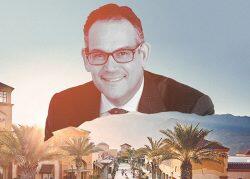With occupancy and rental income up last quarter, the head of the nation’s largest mall owner wants to put an end to “the so-called negative mall narrative.”
Simon Property Group CEO David Simon said on the REIT’s third-quarter earnings call that “many have tried to kill off physical retail real estate and in particular enclosed malls,” but the company’s $39 billion in dividends paid to shareholders during the pandemic is a sign that it has become more “stronger and more profitable.”
Technically, however, last quarter was less profitable for Simon.
Read more


The company’s third-quarter funds from operations were $1.11 billion, or $2.97 per share, a slight drop from the $1.18 billion figure from Q3 of 2021. Net income was $539 million, down from $679.9 million during the same period last year.
Still, Simon said the company still had a good quarter internationally despite the strength in the dollar, with growth driven by higher rental income. Simon also cited lower contributions from the company’s other platform investments.
Base minimum rent per square foot was $54.80 as of Sept. 30, which was up from $53.91 a year ago. Occupancy was almost 95 percent, up 1.7 percentage points.
Though Simon has been bullish on malls, the firm has also been diversifying, announcing last month that it would buy half of real estate investment firm Jamestown. The deal is expected to close this year. Financial terms were not disclosed.
Heading into the holiday season, the CEO called high inflation and interest rates concerning, though he expressed confidence in physical retail. Many mall owners are adapting or redeveloping their properties to adjust to consumers’ changing habits.
“I still feel like demand and bricks and mortars is where the action is going to be,” he said.
